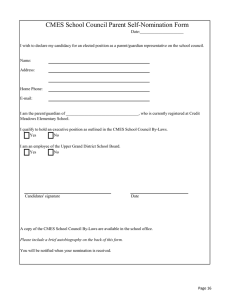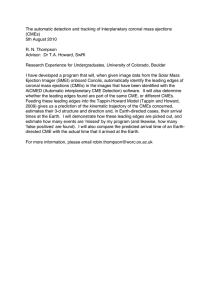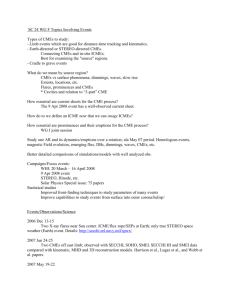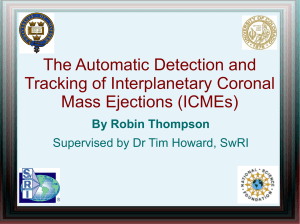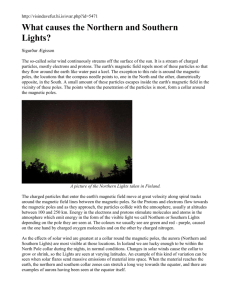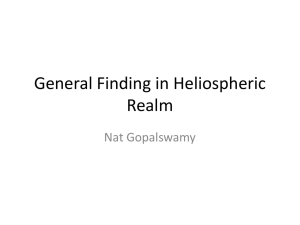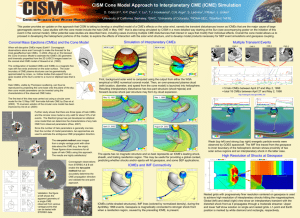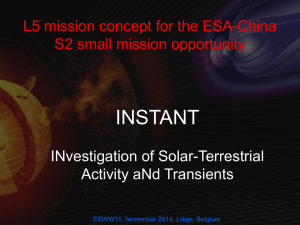Astronomy – Name: ______KEY___________________ Date
advertisement
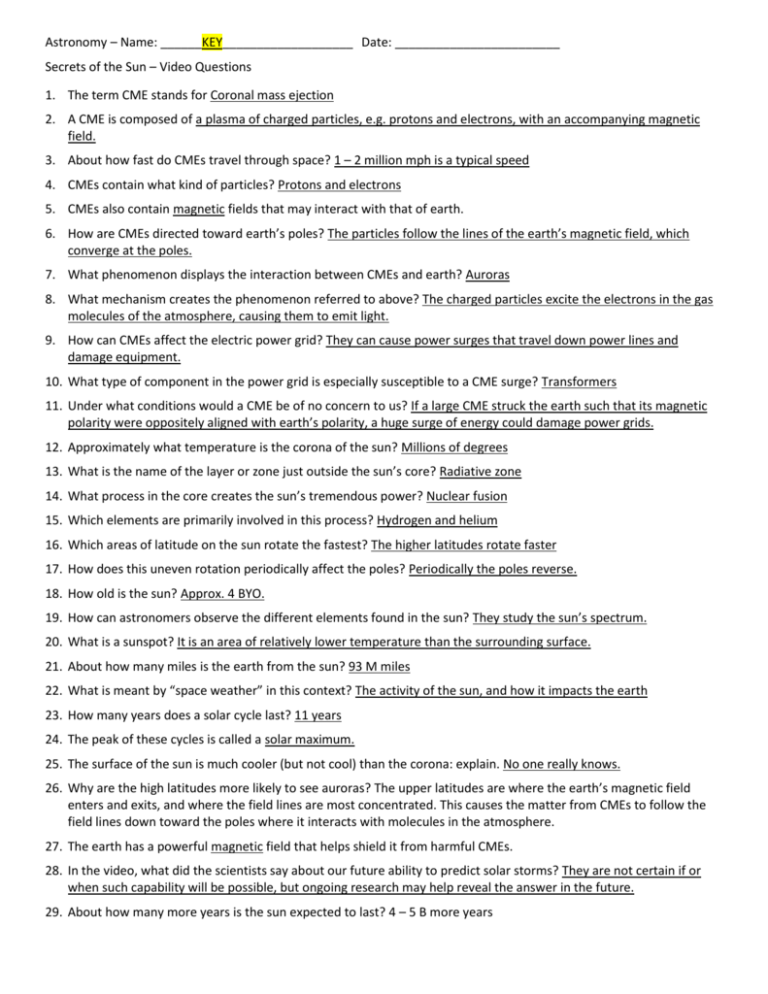
Astronomy – Name: ______KEY___________________ Date: ________________________ Secrets of the Sun – Video Questions 1. The term CME stands for Coronal mass ejection 2. A CME is composed of a plasma of charged particles, e.g. protons and electrons, with an accompanying magnetic field. 3. About how fast do CMEs travel through space? 1 – 2 million mph is a typical speed 4. CMEs contain what kind of particles? Protons and electrons 5. CMEs also contain magnetic fields that may interact with that of earth. 6. How are CMEs directed toward earth’s poles? The particles follow the lines of the earth’s magnetic field, which converge at the poles. 7. What phenomenon displays the interaction between CMEs and earth? Auroras 8. What mechanism creates the phenomenon referred to above? The charged particles excite the electrons in the gas molecules of the atmosphere, causing them to emit light. 9. How can CMEs affect the electric power grid? They can cause power surges that travel down power lines and damage equipment. 10. What type of component in the power grid is especially susceptible to a CME surge? Transformers 11. Under what conditions would a CME be of no concern to us? If a large CME struck the earth such that its magnetic polarity were oppositely aligned with earth’s polarity, a huge surge of energy could damage power grids. 12. Approximately what temperature is the corona of the sun? Millions of degrees 13. What is the name of the layer or zone just outside the sun’s core? Radiative zone 14. What process in the core creates the sun’s tremendous power? Nuclear fusion 15. Which elements are primarily involved in this process? Hydrogen and helium 16. Which areas of latitude on the sun rotate the fastest? The higher latitudes rotate faster 17. How does this uneven rotation periodically affect the poles? Periodically the poles reverse. 18. How old is the sun? Approx. 4 BYO. 19. How can astronomers observe the different elements found in the sun? They study the sun’s spectrum. 20. What is a sunspot? It is an area of relatively lower temperature than the surrounding surface. 21. About how many miles is the earth from the sun? 93 M miles 22. What is meant by “space weather” in this context? The activity of the sun, and how it impacts the earth 23. How many years does a solar cycle last? 11 years 24. The peak of these cycles is called a solar maximum. 25. The surface of the sun is much cooler (but not cool) than the corona: explain. No one really knows. 26. Why are the high latitudes more likely to see auroras? The upper latitudes are where the earth’s magnetic field enters and exits, and where the field lines are most concentrated. This causes the matter from CMEs to follow the field lines down toward the poles where it interacts with molecules in the atmosphere. 27. The earth has a powerful magnetic field that helps shield it from harmful CMEs. 28. In the video, what did the scientists say about our future ability to predict solar storms? They are not certain if or when such capability will be possible, but ongoing research may help reveal the answer in the future. 29. About how many more years is the sun expected to last? 4 – 5 B more years 30. Why doesn’t the pressure in the sun’s core cause it to blow apart? Gravity counteracts and contains the expansion pressure.
